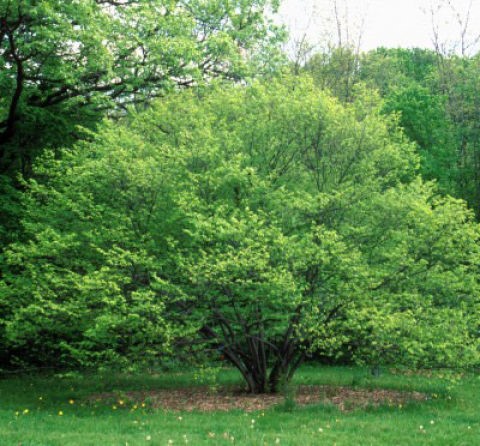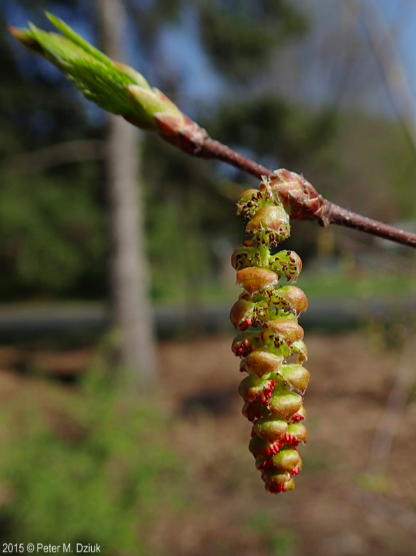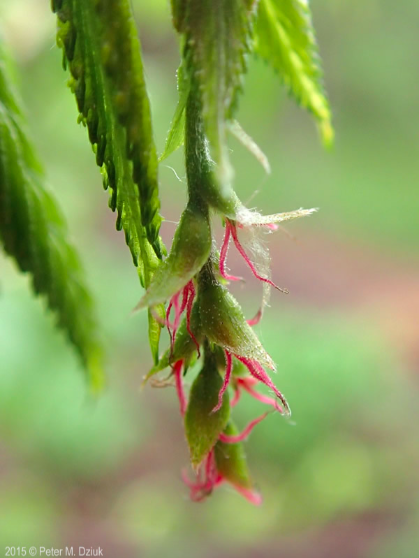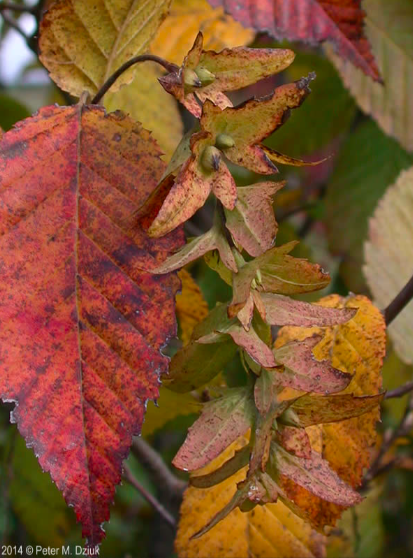Carpinus caroliniana
The blue beech, or American hornbeam, is native to much of the eastern United States as well as some of southern Mexico.
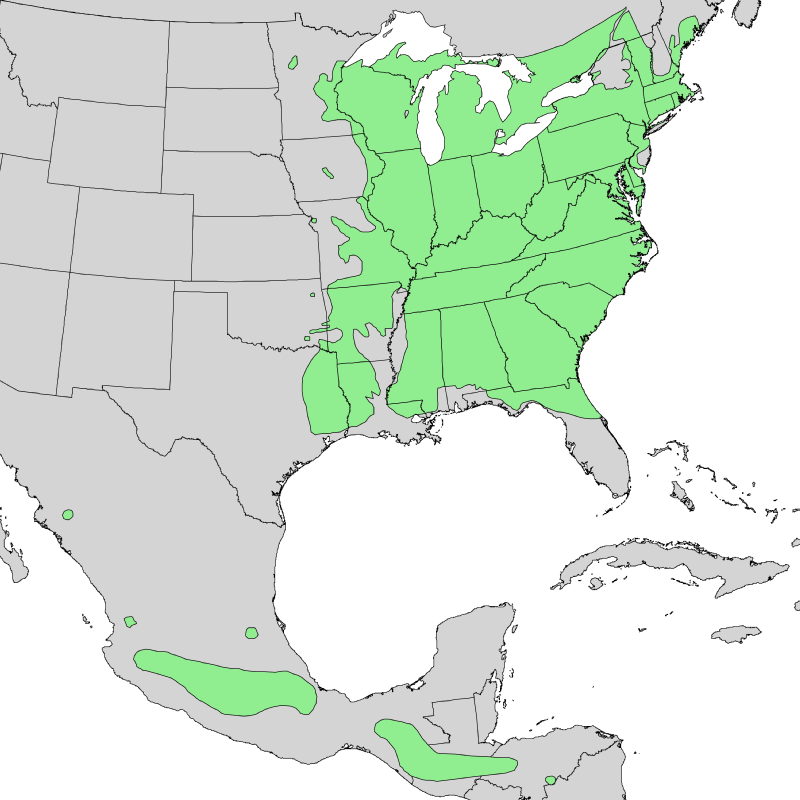
Distribution of Blue Beech from USGS (“Atlas of United States Trees” by Elbert L, Little Jr.)
The blue beech is a small, slow-growing, and short-lived tree that generally grows in the under stories of hardwood forests. They reach 15 to 20 feet at maturity on average, but the largest specimen on record was 65 feet tall. Since it usually grows in the under stories of forests, this species is very shade tolerant while it is young. As it matures, it requires more and more sun. The blue beech can often look like a large shrub since it can grow from multiple or single stems. The trunk is also often crooked since it will search for sunlight. The bark is smooth and a slate gray color.
The blue beech is deciduous, so its leaves fall off in the autumn. During the summertime, the leaves are dark green but change to a red and yellow color in the fall. The leaves are simple and alternate, so they grow singularly from the twig in a staggered fashion. They have a tear drop shape with the ridged margins. The veins on the leaf are deep and run parallel to one another.
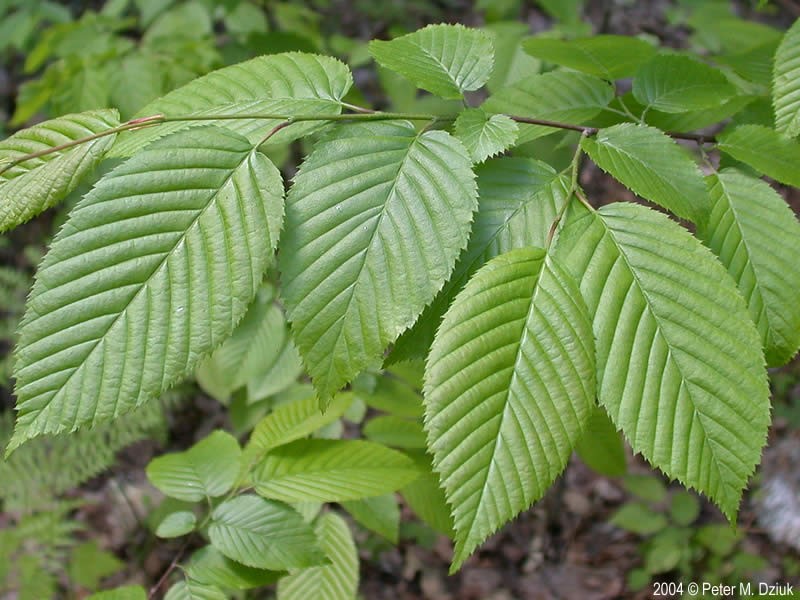
This tree is monoecious, so the male and female flowers grow on the same tree. The male catkins have no stalks and are about 1 to 2 inches in length. They grow in singlets from year old branches, and they have small leaflets that are green with red tips as well as pollen, producing growths underneath that are yellow and red. The female flowers are smaller and grow on the ends of new branches in pairs. They have hairy green leaves with red styles growing from the middle. The fruit produced is a small hairy nut that is attached to a three lobed leaf in the middle.
The fruit of the blue beech was commonly eaten fresh by the people of the Ojibwe tribe that inhabited Minnesota, Wisconsin, and parts of Canada.

